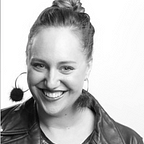Parental leave and quarantine — are they really that different?
Parallels between being on parental leave and social distancing
As I’m scrolling through Instagram I come across a post that compares the challenges of stay-at-home orders to parental leave. Nothing about it surprised me.
It reads, “Dealing with this quarantine is similar to your baby’s newborn stage. It’s survival mode, you’re in your pajamas all day, your hair is dirty, you may burst into tears at any moment, you don’t know what day it is, and you don’t know what to expect with each passing day.“
As the founder of a company who has made it their mission to help expecting parents spend more time with their newborn, I know the emotional rollercoaster, feelings of loneliness and vulnerability that often comes after the birth of a baby. Many times that’s because normal life is suspended for weeks or months (or possibly forever), in order to care for a child. New parents are often alone, running on three hours of sleep or less and separated from friends, co-workers and adult conversations.
Among the many implications of COVID-19, everyone is now in the same boat. Men, women, young, old, those with families and those without — we are now all experiencing that same sense of social isolation and financial insecurity, and the resulting emotional toll, that new mothers have been experiencing for decades.
Which made me ask: what other similarities are there for parents during parental leave and what we are collectively experiencing in this period of social distancing and stay-at-home orders?
Easing the pain of isolation
Caregiving can be some of the most meaningful work that we do — if we can afford to take the time to do it. But all too often, that’s not the case.
Similar to stay-at-home orders, parental leave is typically easier for those home from a white-collar job; employees with salaries and benefits will have some sense of security, and self-isolation can be less taxing in a spacious house rather than a cramped apartment.
But not everyone is fortunate to have access to those benefits.
The bad… and the good?
When looking through the comments on that Instagram post, I saw a familiar theme. In addition to new mothers expressing their general anxiety and panic about having a newborn during a health crisis, I also saw comment after comment stating that quarantine was a “blessing in disguise”.
This made me take pause. Were there really people who were happy about this situation? But as I dug into the comments more, it became abundantly clear why. The surprising gratitude was coming from a place of need — the unexpected emotional and physical support provided from a partner at home that otherwise wouldn’t have been around.
These women, many of whom shared they also had young children at home, confessed that their partner’s new found flexibility makes all the difference.
The biggest takeaway I see from these comparisons is the difference it can make for someone in isolation (aka a new mother) to have support at home during an uncertain and sometimes scary time.
Are we doing enough for parental leave?
The COVID-19 pandemic has put a spotlight on gaps in support for working parents, such as paid family leave. Some states are addressing this issue by introducing paid family leave benefits more broadly, both for parental leave and for COVID-19 related school closings. Currently, eight states (CA, CT, MA, NJ, NY, OR, RI, WA) and D.C. have enacted new laws offering paid family leave.
The duration of leave varies by state, but most provide for 6 to 12 weeks, and all allow leave for care of children, spouses or partners, and parents. Some employers have changed policies in light of this situation and are now offering more workers paid leave, which should encourage fathers to stay home. ¹ The lasting impact of these changes and total increase in people with access to paid leave benefits is still to be determined.
This renewed urgency for comprehensive paid sick leave and parental leave is good news as we think about a future where more people have access to benefits that allow them to do caregiving.
Once this moment passes, new mothers will continue to go through the hardships that are the fourth trimester. But in the meantime, take advantage of any available benefits to create a more equitable sharing of caregiving and emotional labor. It will pay off.
If you have questions about what you may be eligible for we can give you the information and tools to empower you. And hopefully provide you with a little boost of confidence as you go through this big transition. We’re here for you.
Sources:
